Rescuing Prometheus : The story of the mammoth projects—SAGE, ICBM, ARPANET/INTERNET, and Boston's Central Artery/Tunnel—that created new style
THOMAS P. HUGHES
Thomas Hughes takes an in-depth look at four giant technological projects of the post-World War II era. He paints a portrait of the evolving organizational structures and ever-improving management styles that have enabled engineer managers and their teams to accomplish the near-impossible. The four projects are the Semiautomatic Ground Environment (SAGE) air defense project, the Atlas Intercontinental Ballistic Missile project, the development of ARPANET/Internet, and the construction of Boston's Central Artery/Tunnel. Each of these undertakings broke new ground, requiring new techniques to overcome daunting obstacles and foster interdisciplinary cooperation.
As a study in management, the book begins its coverage of managerial evolution with the development of systems engineering. Systems engineering reduced much of management to scientific principles and was critical to the successful interaction that created SAGE. However, later projects proved that the strict science of systems engineering failed when the system to be engineered included a large human element. Hughes shows how a flattening of the management structure and the enhanced use of diverse teams enables the continuing Boston Central Artery/Tunnel project to proceed. Not only does that plan allow for the wide diversity of human interaction but it embraces it. Project management relies on continuing input from all facets of Boston's social and political scene to shape the project as it develops.
Hughes celebrates the role that idealism, as well as creativity, has often played in technological achievements. In today's sociopolitical environment, when many people look upon military-based research and development with a jaundiced eye, it's easy to forget that such projects as SAGE and the Atlas missile were driven by an idealistic belief in the need to protect our society from what was then perceived as a clear danger from a declared enemy.
Hughes's step-by-step examination of how each project team met its challenges is both thought-provoking and insightful. If the Dilbert's-eye view of technology and management has become a bit too depressing, here's a book that reminds us that we are capable of anything. —Elizabeth Lewis
0679411518
Human-Built World: How to Think about Technology and Culture (science * culture)
Thomas P. Hughes
To most people, technology has been reduced to computers, consumer goods, and military weapons; we speak of "technological progress" in terms of RAM and CD-ROMs and the flatness of our television screens. In Human-Built World, thankfully, Thomas Hughes restores to technology the conceptual richness and depth it deserves by chronicling the ideas about technology expressed by influential Western thinkers who not only understood its multifaceted character but who also explored its creative potential.
Hughes draws on an enormous range of literature, art, and architecture to explore what technology has brought to society and culture, and to explain how we might begin to develop an "ecotechnology" that works with, not against, ecological systems. From the "Creator" model of development of the sixteenth century to the "big science" of the 1940s and 1950s to the architecture of Frank Gehry, Hughes nimbly charts the myriad ways that technology has been woven into the social and cultural fabric of different eras and the promises and problems it has offered. Thomas Jefferson, for instance, optimistically hoped that technology could be combined with nature to create an Edenic environment; Lewis Mumford, two centuries later, warned of the increasing mechanization of American life.
Such divergent views, Hughes shows, have existed side by side, demonstrating the fundamental idea that "in its variety, technology is full of contradictions, laden with human folly, saved by occasional benign deeds, and rich with unintended consequences." In Human-Built World, he offers the highly engaging history of these contradictions, follies, and consequences, a history that resurrects technology, rightfully, as more than gadgetry; it is in fact no less than an embodiment of human values.
0226359344
|
The Dangerous Book for Boys
Conn Iggulden Hal Iggulden
Equal parts droll and gorgeous nostalgia book and heartfelt plea for a renewed sense of adventure in the lives of boys and men, Conn and Hal Iggulden's The Dangerous Book for Boysbecame a mammoth bestseller in the United Kingdom in 2006. Adapted, in moderation, for American customs in this edition (cricket is gone, rugby remains; conkers are out, Navajo Code Talkers in), The Dangerous Bookis a guide book for dads as well as their sons, as a reminder of lore and technique that have not yet been completely lost to the digital age. Recall the adventures of Scott of the Antarctic and the Battle of the Somme, relearn how to palm a coin, tan a skin, and, most charmingly, wrap a package in brown paper and string. The book's ambitions are both modest and winningly optimistic: you get the sense that by learning how to place a splint or write in invisible ink, a boy might be prepared for anything, even girls (which warrant a small but wise chapter of their own).
Inside The Dangerous Book for Boys
Figure 8 Knot
Sheet Bend Knot
The Battle of Waterloo
Questions for Conn Iggulden
Conn and Hal Iggulden are two brothers who have not forgotten what it was like to be boys. Conn taught for many years before becoming one of the most admired and popular young historical novelists with his Emperor series, based on the life of Julius Caesar, and his newly embarked series on Genghis Khan, while Hal is a theater director. We asked Conn about their collaboration.
Amazon.com:It's difficult to describe what a phenomenon The Dangerous Book for Boyswas in the UK last year. When I would check the bestseller list on our sister site, Amazon.co.uk, there would be, along with your book, which spent much of the year at the top of the list, a half-dozen apparent knockoff books of similar boy knowledge. Clearly, you tapped into something big. What do you think it was?
Iggulden:In a word, fathers. I am one myself and I think we've become aware that the whole "health and safety" overprotective culture isn't doing our sons any favors. Boys need to learn about risk. They need to fall off things occasionally, or—and this is the important bit—they—they'll take worse risks on their own. If we do away with challenging playgrounds and cancel school trips for fear of being sued, we don't end up with safer boys—we end up with them walking on train tracks. In the long run, it's not safe at all to keep our boys in the house with a Playstation. It's not good for their health or their safety.
You only have to push a boy on a swing to see how much enjoys the thrill of danger. It's hard-wired. Remove any opportunity to test his courage and they'll find ways to test themselves that will be seriously dangerous for everyone around them. I think of it like playing the lottery—someone has to say "Look, you won'twin—and your children won'tbe hurt. Relax. It won'tbe you."
I think that's the core of the book's success. It isn't just a collection of things to do. The heroic stories alone are something we haven't had for too long. It isn't about climbing Everest, but it is an attitude, a philosophy for fathers and sons. Our institutions are too wrapped up in terror over being sued—so we have to do things with them ourselves. This book isn't a bad place to start.
As for knockoff books—great. They'll give my son something to read that doesn't involve him learning a dull moral lesson of some kind—just enjoying an adventure or learning skills and crafts so that he has a feeling of competence and confidence—just as we have.
Amazon.com:You made some changes for the U.S. edition, and I for one am sorry that you have removed the section on conkers, if only because it's such a lovely and mysterious word. What are (or what is) conkers?
Iggulden:Horse chestnuts strung on a shoelace and knocked against one another until they shatter. In the entire history of the world, no one has ever been hurt by a conker, but it's still been banned by some British schools, just in case. Another school banned paper airplanes. Honestly, it's enough to make you weep, if I did that sort of thing, which I try not to. Reading Jane Austen is still allowed, however.
Amazon.com:What knowledge did you decide was important to add for American boys? I notice in both editions you have an excellent and useful section on table football, as played with coins. Is paper football strictly an American pastime? I'm not sure I could have gotten through the fourth grade without it.
Iggulden:I like knowing the details of battles, so Gettysburg and the Alamo had to go in, along with the Gettysburg address, stickball, state capitals, U.S. mountains, American trees, insects, U.S. historical timelines, and a lot of others. Navajo code talkers of WWII is a great chapter. It probably helps that I am a huge fan of America. It was only while rewriting for the U.S. that I realized how many positive references there already are. You have NASA and NASA trumps almost anything.
As for paper football, ever since I thought of putting the book together, people keep saying things like "You have rockets in there, yes? Everyone loves rockets!" Paper football is the first American one, but there will be many others. No book in the world is long enough to put them all in—unless we do a sequel, of course.
Amazon.com:Do you think The Dangerous Book for Boysis being read by actual boys, or only by nostalgic adults? Have you seen boys getting up from their Xboxes to go outside and perform first aid or tan animal skins or build go-carts?
Iggulden:I've had a lot of emails and letters from boys who loved the book—as well as fathers. I've had responses from kids as young as ten and an old man of 87, who pointed out a problem with the shadow stick that we've since changed. The thing to remember is that we may be older and more cynical every year, but boys simply aren't. If they are given the chance to make a go-cart with their dad, they jump at it. Mine did. Nothing gives me more pleasure than to know the book is being used with fathers and sons together, trying things out. Nothing is more valuable to a boy than time with his dad, learning something fun—or something difficult. That's part of the attitude too. If it's hard, you don't make it easy, you grab it by the throat and hang on for as long as it takes.
The book is often bought by fathers, of course. Their sons don't know Scott of the Antarctic is a great adventure story. How could they if it isn't taught any more? Good, heroic stories don't appear much in modern school curriculums—and then we wonder why boys don't seem interested.
Amazon.com:And finally, on to the important questions: Should Pluto still be a planet? And what was the best dinosaur?
Iggulden:Pluto is a planet. I know there are scientists who say it isn't, but it's big enough to be round and it has a moon, for crying out loud. Of course it's a planet. Give it ten years and they'll be agreeing with me again.
As for the best dinosaur, it depends what you mean by best. For sheer perfection, it probably has to be the shark and the crocodile. Modern ones are smaller but their record for sheer survival is pretty impressive. I only hope humanity can do as well. The only thing that will stop us is worrying too much.
0061243582
|
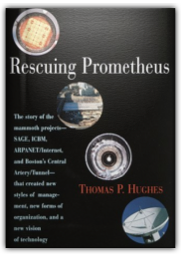
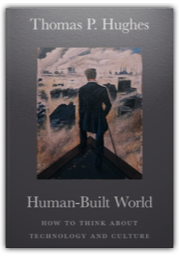
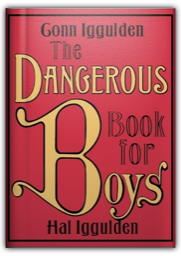


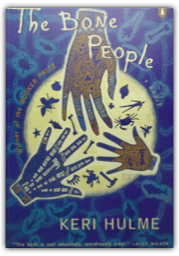
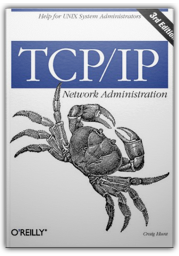



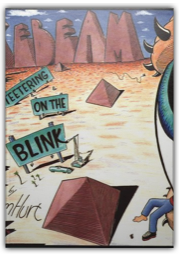
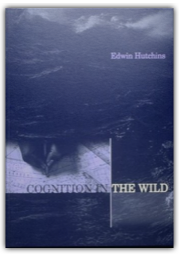
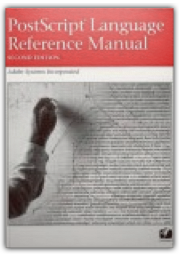
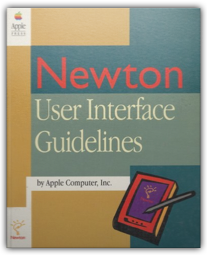


 Made with Delicious Library
Made with Delicious Library